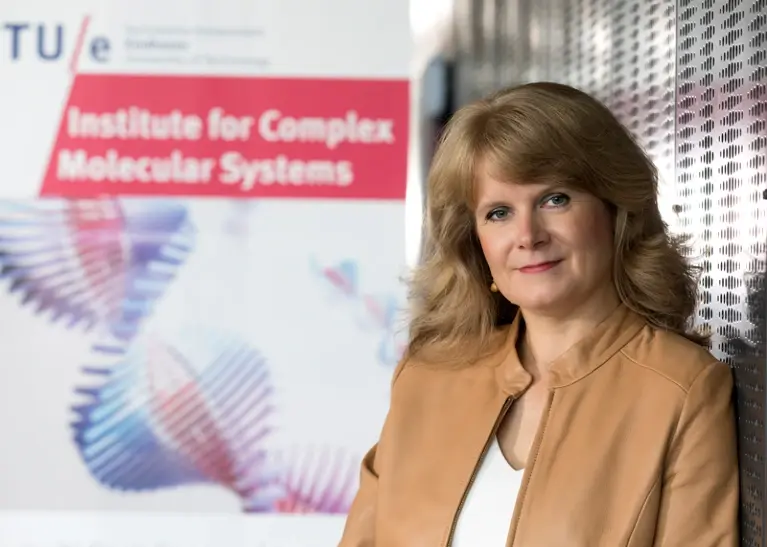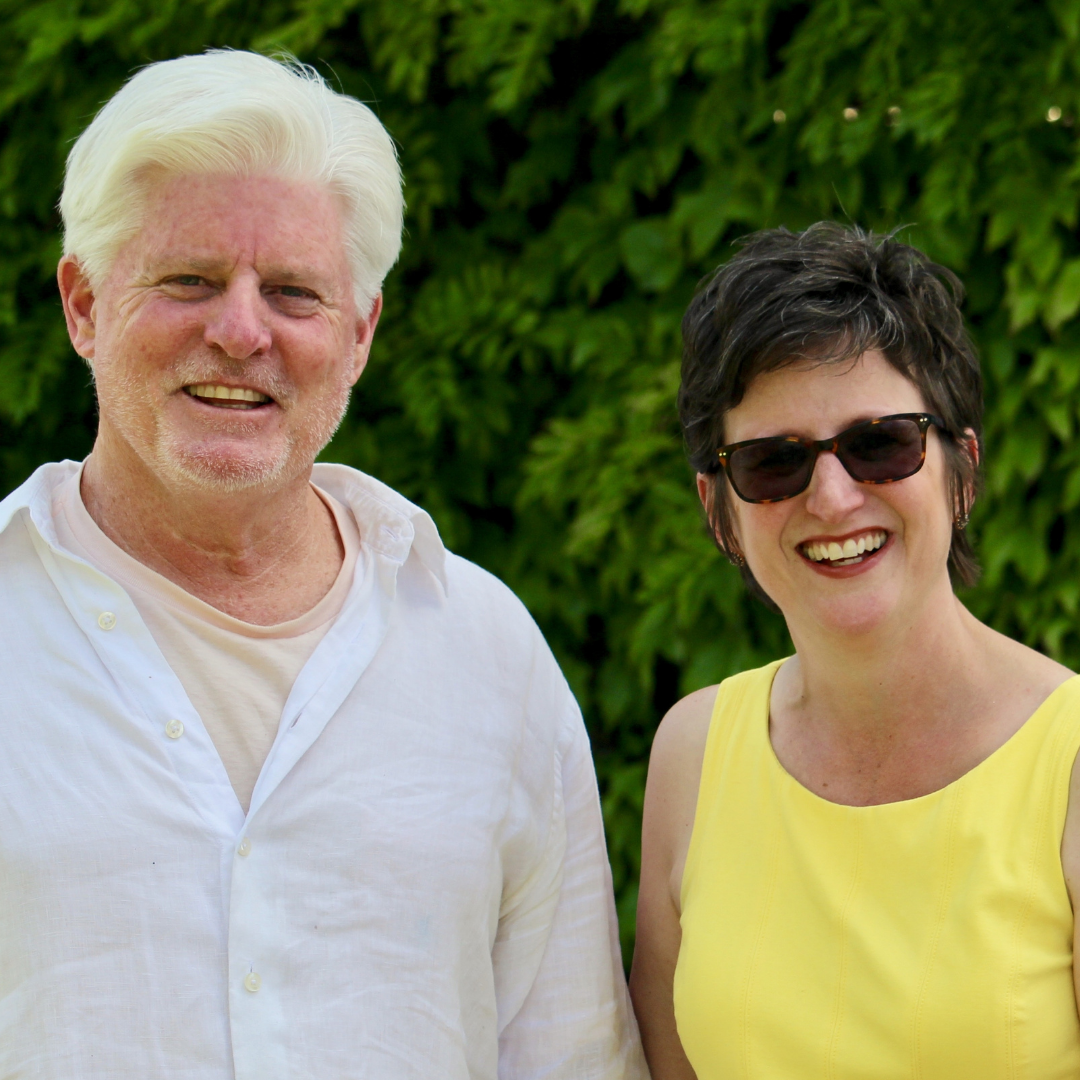


If having a lab named after you is the criterion for “making it,” then Patricia Dankers has made it. Dankers is professor at Eindhoven University of Technology and she is involved in many projects. She is co-founder of two TU/e spin-offs, a member of the Smart BioMaterials Consortium, a co-founder of the newly opened Helmond Biotech-materials Hub and since the end of 2024, the CEO of SyMO-Chem.

Dankers is not only a skilled chemist but she is also very much a people person who thrives on working with young, passionate students. She strongly believes in the content and the details but equally important are the people and the environment.
As professor of Biomedical Materials and Chemistry at TU/e, Patricia Dankers’ dream is to make complex materials to “ultimately control the biology of the human body.” Given this lofty ambition, it’s no surprise she has always been fascinated by life sciences and technological subjects.
Speaking with Dankers, her passion for understanding how things work is immediately clear. This drive initially drew her to fundamental research, but today she seamlessly bridges the worlds of fundamental and applied research, leveraging insights to advance both.
“I was really good in beta subjects like mathematics and chemistry. I thought it would be cool to be a girl in that environment.”
She was inspired by her professors, especially TU/e Professor Bert Meijer, who showed her the potential of what she could achieve.

Patricia Dankers, far right, with co-founders of UPyTher, on stage as they win the Gerard & Anton Award in 2024.
At a certain point, Dankers was happy with her research but was inspired to bring products directly to the patient, which led her to co-found two TU/e spin-offs, VivArt-X and UPyTher.
UPyTher develops advanced intraperitoneal drug delivery therapies for oncology. Dankers is hopeful about its prospects, saying “We are far enough that we are convinced it could work.”
This might not sound optimistic in the mainstream startup world, but in the biotech world, this is high praise, as these startups require extensive research before reaching the regulatory phase.
That’s why Dankers’ background helps these startups, and because of her experience, she can guide them more effectively and accelerate their progress.
As a lifelong learner, she was intrigued by the differences in female health compared to that of males, so it’s not by coincidence the younger of the two spinouts, VivArt-X, focuses on women’s health. The company delivers regenerative solutions for patients, starting with breast reconstructive surgery.

Patricia Dankers, second from left, with VivArt-X co-founders after winning the coveted Gerard & Anton Award in 2023.
“It's interesting to focus on women’s health and I love working with Dan Jing Wu,” Dankers says in talking about her fellow co-founder and CEO of VivArt-X. “The company grew so fast, which is truly because of her way of working. I like that we are going through this journey together.”
Dankers has always felt comfortable and enjoyed working in a male-dominated environment.
“I never thought, ‘Oh, I'm not meant to be in this male-dominated environment. I like to be one of the guys,’” she says.
But Dankers believes in balance and she’s welcoming a change, seeing more and more women in the research field. At conferences around the world, she’s seen that it’s not just a local trend but a global one.
However, she’s quick to point out that in her group, she sees the ratio of men to women goes in cycles and she’s not one to push the balance in one direction artificially.
 Patricia Dankers and Frank van der Zanden, founders of the Helmond Biotech-materials Hub.
Patricia Dankers and Frank van der Zanden, founders of the Helmond Biotech-materials Hub.
“I like to connect networks and get people working together to make the next step,” Dankers says.
So, it was natural for her to work with the Smart BioMaterials Consortium (SBMC) and to co-found together with Frank van der Zanden the recently opened Helmond Biotech-materials Hub (HBH). It is a new living lab that provides life sciences and health startups with lab space, clean rooms and support they need to turn biomedical ideas into reality.
“What we do with HBH and SBMC is to create an environment for the Brainport region to get people together in this exciting field where we develop new materials that can also be used in combination with drugs. I love to work with SBMC and it will be fantastic if they are successful. It would be really good for the whole region, including for the students graduating from our university, Fontys and Summa.”
In talking with her, you quickly see Dankers’ passion for the region. Raised in Helmond, she is a strong supporter of regional growth in the technical fields. She loves the collaborative nature of the region.
“What I like in this environment is that we're not here to compete with each other. We should do it together. Why not team up to make things even better?”
While research is a driving force for Dankers, it’s the people she works with that truly inspire her.
“The content matters a lot, but it’s also the people. It’s the atmosphere that matters to me. I love the people I work with. I love to do research with young people who get excited about the next step. I'm always so proud when a young researcher obtains a master or PhD degree. You clearly see the years of growth,” she says.
Dankers is a role model for both women and men.
“My role models were primarily male scientists and in that time, I don't think they saw what a woman also needs to do at home, in addition to work. I like that I can now guide the younger generation. I think it's important to have female role models,” she says, although she still encourages having a mix of role models.
Dankers sees mentorship as an important part of her role. She can guide people using her wealth of life and career experience, not only where careers and research are concerned but also about life balance and perspective. She says it’s often difficult to see where to devote your time, but she encourages her students to have families and pursue interests beyond their careers.
Dankers is now used to seeing her name on her group’s lab, but it wasn’t always the case. Geert van Almen – a post-doc-turned-UPyTher Colleague – helped her brand the group. He pushed her to use her name in a more American style of branding, but she initially resisted. It took her years to get used to it.
Why did she resist? It’s because she is convinced the team is the most important thing. “It's us together. It’s the team,” she says.